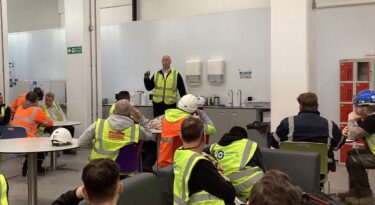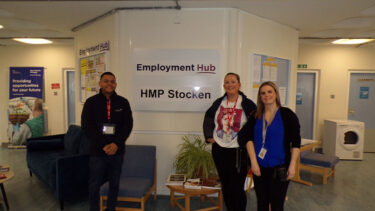Science facilities require a very meticulous and collaborative approach to construction.
As competition in the construction marketplace ever increases, the sectors leading companies are more reliant than ever on having the very best people, with the right skills, to lead the charge.
Damon Cutler is Project Director at Wates and was a finalist in the 2019 Construction Manager of the Year Awards for his delivery of Quadram Institute, a state-of-the-art food and health research and endoscopy centre. Here he talks about the challenges he overcame to spearhead the projects success.
I have worked in the construction industry for 30 years and have been fortunate to develop a diverse range of skills. However, it is perhaps my experience delivering hospitals and laboratories of which I am most proud.
As highly technical and complex clinical environments, science facilities require a very meticulous and collaborative approach to construction. They are renowned in the industry for their intricacy due to their highly serviced nature which makes the commissioning process critical; commencing this correctly at the right time is inherent to a projects overall success.”

Damon Cutler
Project Director at Wates Construction
Multiple commissioning requirements
At Quadram, we had to build a hospital and several laboratories within one building – under the same roof but with completely independent systems. Finding a way to incorporate the installations whilst ensuring they remained autonomous and to multiple commissioning requirements was a huge challenge.
Commencing the commissioning early was the way forward but we faced a barrier to this in the form of the buildings large atrium space. This exposed three floors to the elements and affected my ability to make the building watertight. So we developed a solution that comprised a temporary waterproof deck and this brought the watertight date forward by 10 weeks.
Relationship with SES Engineering Services
The relationship with our MEP contractor, SES Engineering Services, was also critical. We worked closely together as a single project team to enable a seamless delivery and this approach now serves as best practice which Wates and SES now sets as standard for complex projects.
Meanwhile, quality of the space and build was one of the key drivers for the client at the Quadram Institute reflecting its status as a world class facility with the ability to attract and retain the best talent from around the world. For example, the brickwork was fundamental so we allocated a far longer construction period than normal and insisted that our subcontractors team consisted of trades people with experience and passion, rather than a collection of individuals chasing a programme. This approach resulted in a stunning façade, with which the client and architect are both delighted.
Internally, the functional spaces were vital for the end users so we constructed a laboratory and an endoscopy procedure room early on and fully fitted them out so that they and our client could inspect them and provide feedback. Their views were then incorporated into ongoing works and the spaces used as benchmarks for future works.
Working collaboratively with our client
The Quadram Institute was an extremely innovative and multi-dimensional project, its end use being to develop solutions to worldwide challenges in food-related disease and human health. At Wates, were fortunate to have a rich span of knowledge across the business and I was able to harness this and work collaboratively with my client, consultants and end users in order to deliver an innovative and technically adept project that is worthy of its global ambition.
Im extremely proud to have played a part in its construction. To now have my input recognised as a constituent of its success by the Chartered Institute of Building (CIOB) is incredibly gratifying.”




